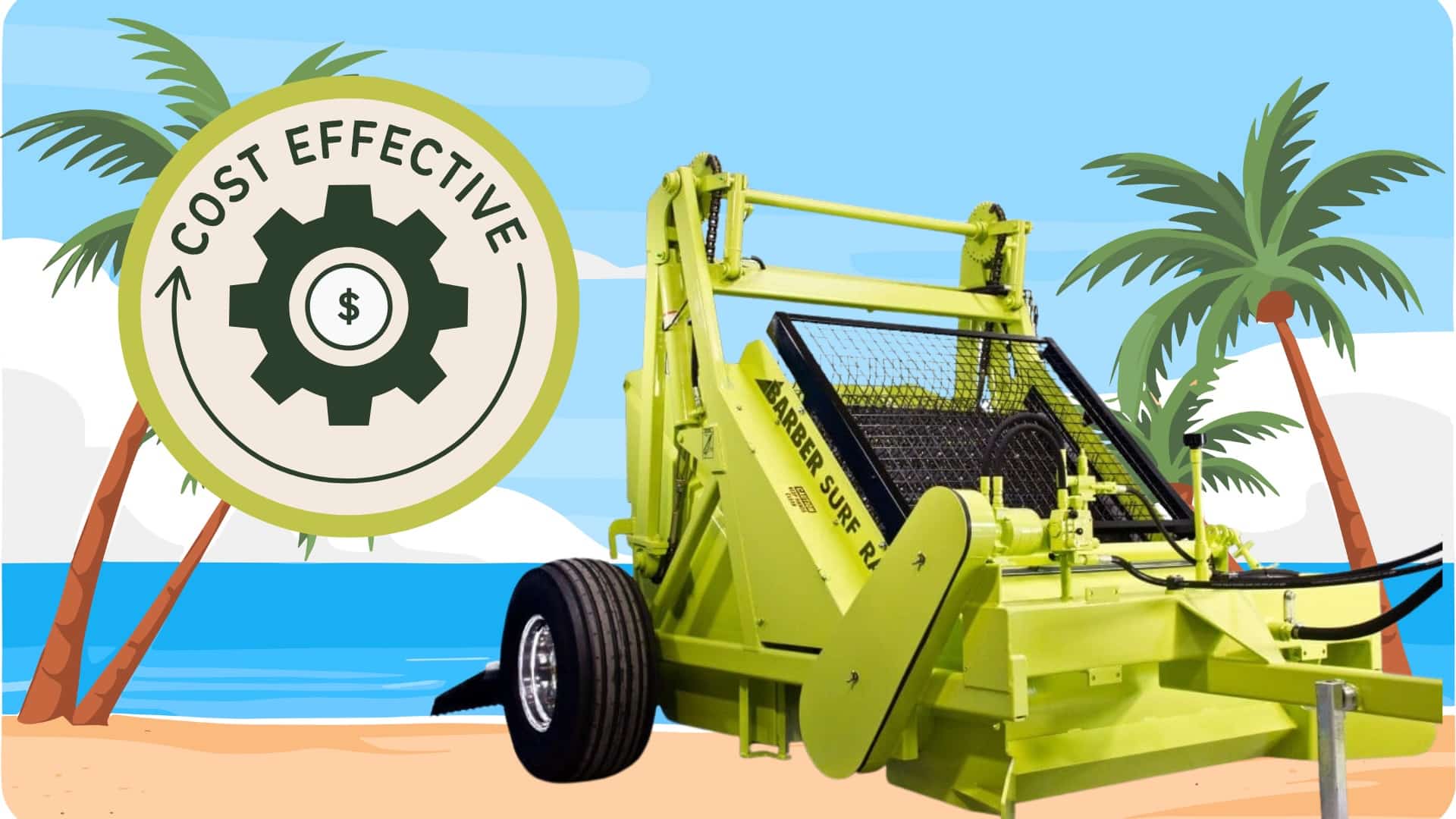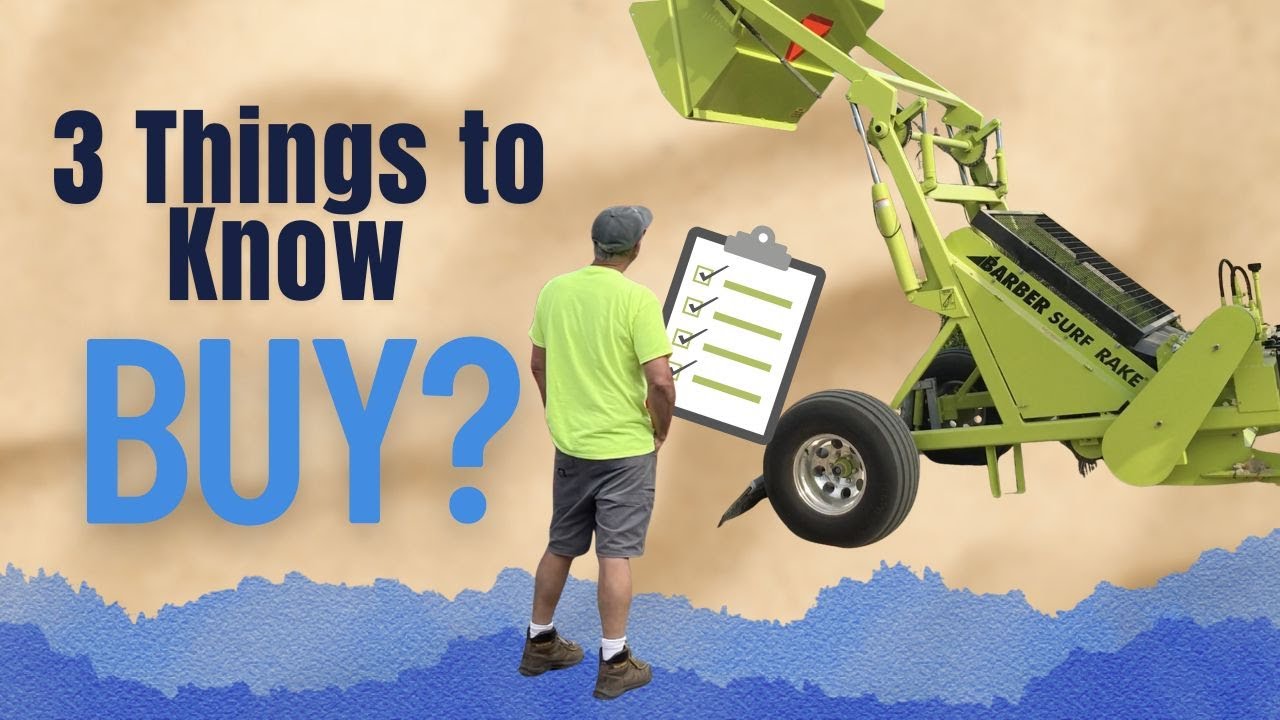How much does a beach cleaner cost?
If you maintain a beach, you’ve probably wondered what a designated beach cleaning machine actually costs — and whether the investment pays off.
In general, beach cleaner prices range from $15,000 for small walk-behind models to over $150,000+ for high-capacity tractor-towed and industrial-grade machines.
Below is a breakdown of the most common machine types, what they cost, and which beaches they’re built for.
| Machine Type | Typical Price Range (USD) | Best For | Key Advantages |
|---|---|---|---|
| Walk-behind beach cleaner | $10,000–$25,000 | Small private beaches, coves, short shorelines, dry sand | Lowest cost; no tractor needed; simple to operate |
| Small tractor-attachment sifter | $20,000–$30,000 (machine only) | Small–medium beaches with mostly dry sand and small debris | Affordable upgrade; works with a compact tractor |
| Mid-range tractor-towed raking and sifting machines | $30,000–$65,000 | Municipal beaches with consistent debris | Good throughput; effective on a wide range of debris, depending on machine type; economical |
| Premium tractor-towed beach cleaner | $65,000–$100,000+ | 1–5+ mile beaches; mixed conditions; shells; seaweed, regular cleaning | High speed and capacity for daily cleaning of highly-trafficked beaches. |
| Maximum Capacity Beach Cleaners | $100,000–$150,000+ | Major coastal cities; heavy seaweed; storm debris | Max durability; highest output; cleans 7–9 acres/hr |
Hidden Beach Cleaner Costs (Read Before You Budget)
The sticker price only tells part of the story.
Just like buying a home, owning a beach cleaner includes several secondary costs that can influence your actual investment.
1. Shipping, Taxes & Import Fees
These vary by location, port, and dealer, but they’re part of nearly every purchase.
If you’re budgeting for a municipal bid, include this line item early — it often surprises buyers.
The specific fees can vary drastically by the beach’s proximity to the manufacturer, so reach out to the specific beach cleaner manufacturer you’re considering for specific estimates.

2. Tractor Requirements (If Applicable)
Most beach cleaning machines are tractor-towed, which means:
- If you already have a compatible tractor → great
- If not → the tractor becomes part of your total cost
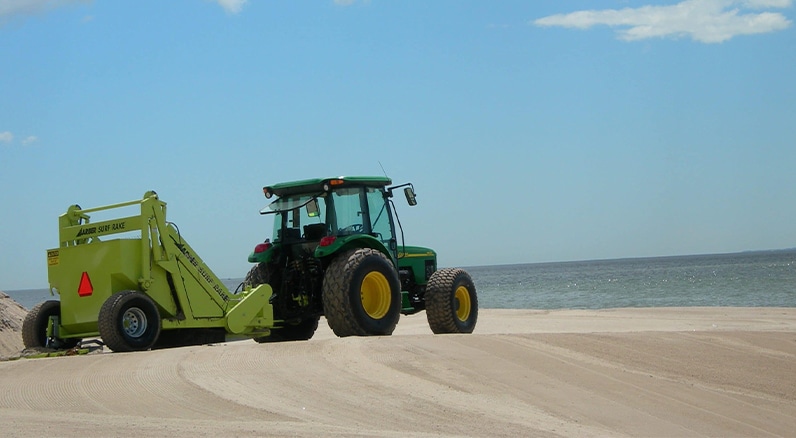
A key insight:
Some self-powered or self-propelled units cost more than a premium towed machine and a tractor combined.
This is why it’s important to compare total system cost — not just machine cost.
3. Ongoing Maintenance & Operation
Every machine—regardless of brand—requires standard upkeep:
- Wear parts (belts, screens, tines, bearings, chains)
- Occasional repairs
- Labor for a trained operator
- Greasing & routine adjustment
A machine that’s inexpensive upfront but costly to maintain may be more expensive over its lifetime.
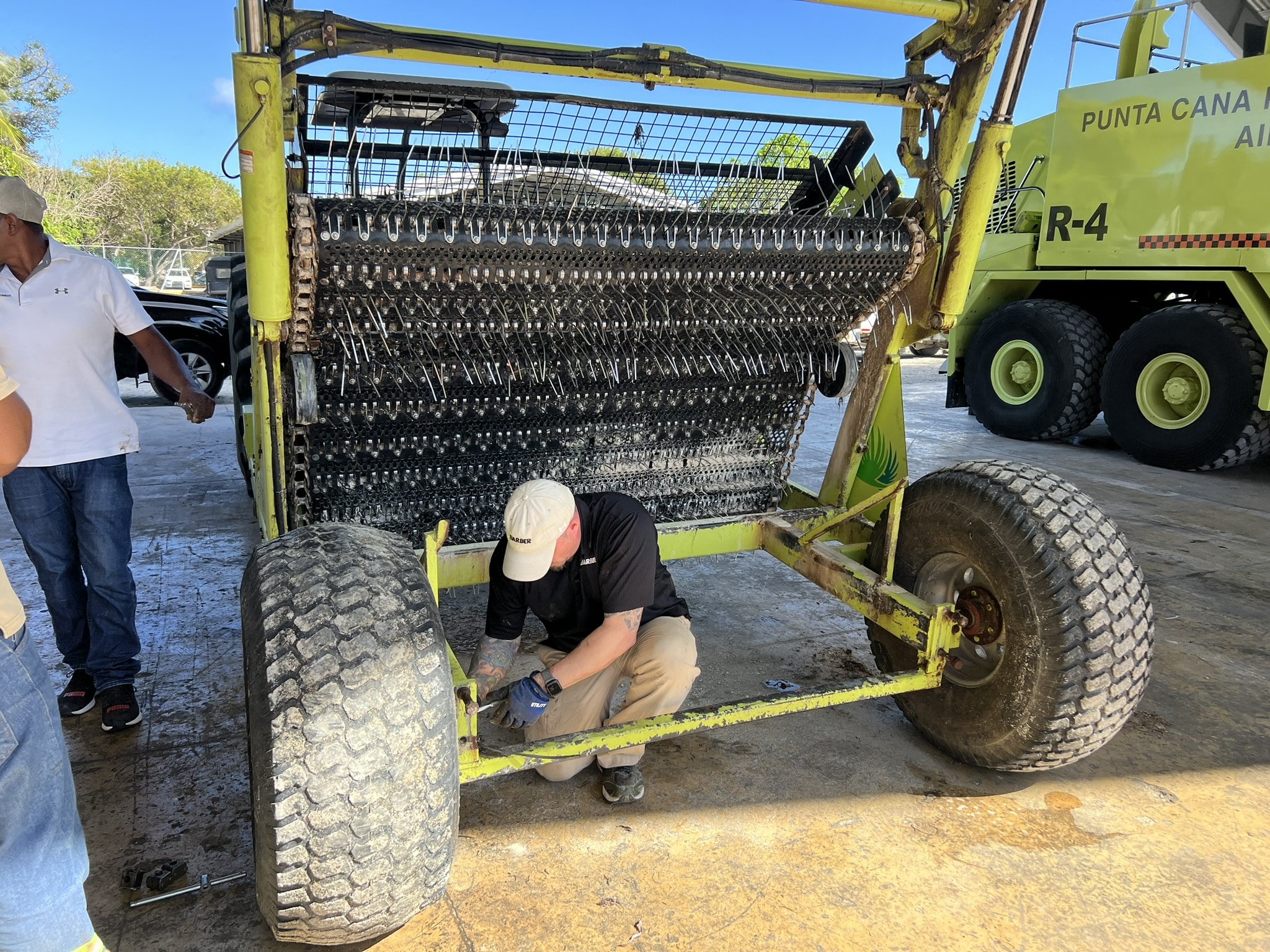
Pro tip: Machines that work in sand + saltwater should be evaluated on total cost of ownership (TCO), not just purchase price.
Why Can’t I Find Beach Cleaner Prices Online?
If you’ve searched for “beach cleaner price,” you’ve likely noticed that most manufacturers don’t publish exact prices.
It’s not a sales tactic — there are simply too many variables.
Beach cleaner cost depends on:
- Model type & cleaning method (sifter vs. rake)
- Cleaning width & hopper capacity
- Dump mechanisms
- Tractor requirements
- Customizations & options
- Regional dealer fees
- Raw-material & supply-chain changes
- Tariffs, taxes, and import/export variables
- Municipal bid requirements
In short: there is no single flat price tag for any industrial-grade beach cleaner.
Understanding which factors matter for your beach program helps you avoid overbuying — and avoid paying for capabilities you don’t need.
👉 For a deeper breakdown of these variables, read our guide:
What Impacts Beach Cleaner Prices?
What Is the Cost of NOT Buying a Beach Cleaner?
Despite the potential costs of owning a beach cleaner, if you’re maintaining your beach manually, you may already be paying for one — just in a less efficient way.
Without a machine, you’re paying for:
- High labor costs
- Slow cleanup cycles
- Staff time diverted from more valuable work
- Inconsistent results (especially after events, storms, or heavy seaweed days)
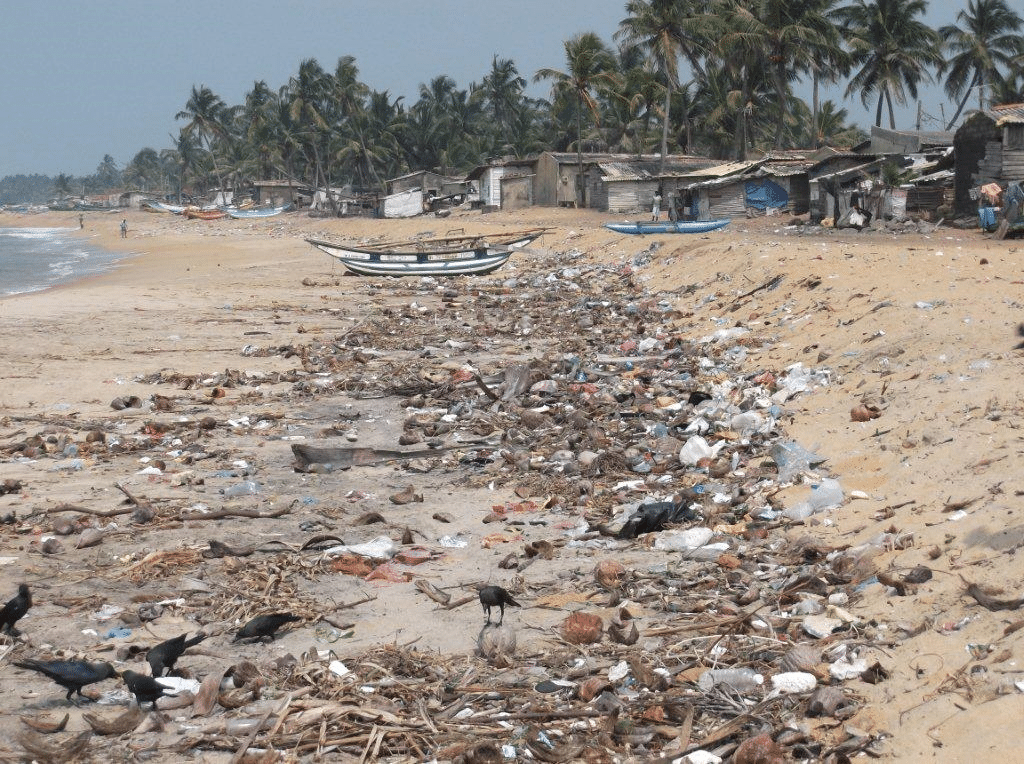
Dirty beaches also create hidden revenue losses:
- Negative guest experiences
- Lower return visits
- Bad reviews and complaints
- Higher long-term cleanup costs after buildup or compaction

On the flip side: a clean beach increases loyalty, safety, and guest satisfaction — and reduces your overall operating burden.
Not Sure What Beach Cleaner You Need? We Can Help.
Every beach is different. So is every budget.
Our team can walk you through:
- Whether a machine makes sense for your actual use case
- Which model fits your beach conditions and staffing
- Total ownership cost (machine + tractor + maintenance)
- How much you might save or earn back with a consistent cleaning program
📧 Contact us here or call us — you’ll talk to a real person, not a bot.
Not ready to talk yet?
Browse more beach cleaner resources here.
Beach Cleaner Cost FAQ
Yes — even small beaches benefit from a dedicated machine. Walk-behind or light tractor-attachment models reduce labor costs, speed up cleanup, and provide consistent results that manual crews rarely achieve. If your business depends on the beach for revenue, a beach cleaning machine is almost always a good investment.
Only if you choose a tractor-towed unit and do not already own a compatible tractor. Some buyers find that a premium towed machine plus a tractor costs less than a self-propelled unit.
Most high-quality beach cleaners last 10–20+ years with regular maintenance. But how long a beach cleaner lasts depends on many variables. You can read more about how to reduce beach cleaner maintenance costs and extend machine life here.
Annual maintenance typically includes lubrication, belts, bearings, tine replacement, and occasional repairs. Costs vary widely depending on how intensely they’re used and under what conditions. New machines often will go several years without requiring replacement parts. Regardless, many municipalities budget $1,000–$3,500/year depending on usage.


